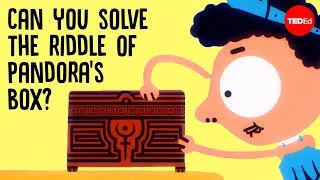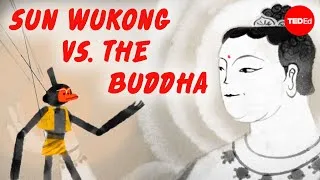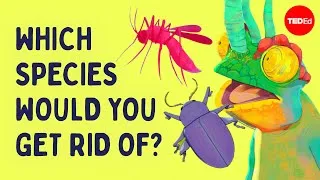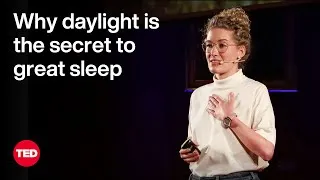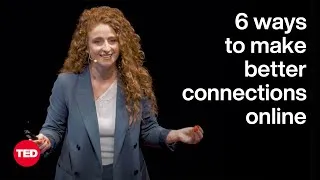請雙擊下方英文字幕播放視頻。
譯者: Pao YuChen
審譯者: Max Chern
00:06
Where does bread get its fluffiness?
0
6809
2355
麵包如何變得鬆軟?
00:09
Swiss cheese its holes?
1
9164
1899
瑞士起司為什麼有孔洞?
00:11
And what makes vinegar so sour?
2
11063
2607
什麼讓醋變得這麼酸?
00:13
These foods may taste
completely different,
3
13670
2446
這些食物嚐起來可能完全不同
00:16
but all of these phenomena come from
tiny organisms chowing down on sugar
4
16116
5183
但是所有的現象
都來自微生物分解糖分
00:21
and belching up some culinary byproducts.
5
21299
3154
並且釋放一些食物的副產品
00:24
Let's start with yeast.
6
24453
2507
讓我們從酵母開始
00:26
Yeast are single-celled fungi
used to make bread, beer, and wine,
7
26960
5281
酵母是一種單細胞真菌
用於製作麵包、啤酒、葡萄酒
00:32
among other products.
8
32241
1634
以及其他產品
00:33
Yeast break down carbohydrates,
like sugar,
9
33875
2550
酵母分解碳水化合物,像是糖
00:36
to get energy
and the molecules they need to function.
10
36425
3316
以獲得它們運作時所需的能量和分子
00:39
They have two different ways to do this:
11
39741
1932
它們有兩種不同方法進行
00:41
the oxygen-dependent, or aerobic, pathway,
12
41673
3126
一種是倚靠氧氣的方法,或「有氧」途徑
00:44
and the oxygen-independent,
anaerobic pathway,
13
44799
3439
以及不倚靠氧氣的方法,或「厭氧」途徑
00:48
which is also called fermentation.
14
48238
2605
後者也稱為發酵(fermentation)
00:50
When you bake bread,
yeast can use both pathways,
15
50843
2962
當烤麵包時,酵母能使用這兩種途徑
00:53
but they normally prefer to start with
the anaerobic process of fermentation.
16
53805
5068
但是通常會從厭氧途徑發酵開始
00:58
In this process, ethanol is produced
in addition to CO2.
17
58873
4430
在這個過程,除了二氧化碳以外
還會產生出乙醇(酒精)
01:03
No, bread isn't alcoholic.
18
63303
1965
不對,麵包沒有酒精
01:05
Small amounts of alcohol that are secreted
evaporate during baking.
19
65268
4507
因為少量的酒精
在烘烤時就悄悄地蒸發了
01:09
In the aerobic,
or oxygen-dependent pathway,
20
69775
2993
在有氧,或是依靠氧氣的途徑
01:12
the yeast consume some of the sugar
21
72768
1870
酵母消耗部份的糖
01:14
and produce carbon dioxide gas,
or CO2, and water.
22
74638
5020
產生出碳酸氣,或二氧化碳和水
01:19
In both processes, the CO2 accumulates
and creates tiny bubbles.
23
79658
5092
這兩種過程中
二氧化碳都會積聚產生小泡泡
01:24
These bubbles get trapped by gluten
and create a sponge-like structure
24
84750
4335
這些氣泡就會被麵糰封包
產生海綿狀結構
01:29
that gives the bread its soft texture.
25
89085
3217
使麵包變得質地鬆軟
01:32
Wine also relies on yeast.
26
92302
2124
葡萄酒也需要酵母
01:34
But a wine-making set-up
keeps the oxygen levels low
27
94426
3286
但是釀酒的裝置維持在低氧狀態
01:37
so that yeast consume sugar
using fermentation,
28
97712
2960
導致酵母消耗糖分進行發酵
01:40
the anaerobic pathway.
29
100672
2195
採用厭氧途徑
01:42
The process often starts with wild yeasts
already hanging out on the grapes.
30
102867
5337
這過程一開始是用
早已存在葡萄外皮的野生酵母
01:48
But to get consistent results,
31
108204
1733
但是為了使品質一致
01:49
most winemakers also add
carefully selected strains of yeast
32
109937
4155
大部分釀酒師也會添加
精心挑選的酵母菌種
01:54
that can tolerate high levels of alcohol.
33
114092
2992
能夠承受高酒精度的酵母
01:57
The yeast consume the sugar
in the grape juice,
34
117084
2546
酵母消耗葡萄汁中的糖分
01:59
and as the sugar level drops,
35
119630
1418
隨著糖分降低
02:01
the alcohol level rises.
36
121048
2509
酒精度就升高
02:03
This doesn't necessarily mean
that sweeter wines have less alcohol.
37
123557
3475
這未必就意謂著
較甜的酒其酒精度就較低
02:07
Different types of grapes start with
different amounts of sugar,
38
127032
3151
不同品種的葡萄原本就有不同含糖量
02:10
and sugar can also be added.
39
130183
1937
而且糖也能夠額外添加
02:12
What happens to the carbon dioxide?
40
132120
2090
那麼二氧化碳呢?
02:14
It just bubbles away through a vent.
41
134210
2160
二氧化碳會從排氣口排出
02:16
In carbonated alcoholic beverages,
like champagne and beer,
42
136370
3381
在碳酸酒精飲料中,像是香檳或啤酒
02:19
sealed containers are used in primary
or secondary fermentation
43
139751
4178
在首次和二次發酵會使用密閉容器
02:23
to keep the carbon dioxide in the bottle.
44
143929
3254
以保留二氧化碳在容器內
02:27
Wine also introduces us to our second
type of food-producing microorganism:
45
147183
4963
葡萄酒也讓我們認識
第二種製作食物的微生物:
02:32
bacteria.
46
152146
1240
細菌
02:33
A special strain of bacteria
47
153386
1455
一種特殊菌種
02:34
turns a tart compound in grape juice
into softer tasting ones
48
154841
4834
將葡萄汁液中的酸性物質
變得口感溫和
02:39
that are responsible for some of
the flavors in red wines and chardonnays.
49
159675
4892
這就是紅酒及霞多麗白酒
主要的風味來源
02:44
Another type of bacteria,
called acetic acid bacteria,
50
164567
3115
另一種細菌稱為「醋酸菌」
02:47
isn't so desirable in wine,
51
167682
2127
在酒中並不討喜
02:49
but they have their function, too.
52
169809
1962
但是它仍然有功用
02:51
If there's oxygen around,
53
171771
1578
如果環境中有氧氣
02:53
these bacteria convert the ethanol in wine
into, well, acetic acid.
54
173349
5199
這個細菌會轉化酒中的
乙醇(酒精)變成乙酸(醋酸)
02:58
Let this process continue
and you'll eventually get vinegar.
55
178548
4232
讓這過程持續最終得到的就是醋
03:02
Bacteria are the key for cheese, too.
56
182780
3410
細菌對於起司也是關鍵要素
03:06
To make cheese,
milk is inoculated with bacteria.
57
186190
3451
要製作起司,牛奶要注入細菌
03:09
The bacteria gobble up the lactose,
a kind of sugar,
58
189641
3443
細菌會消耗掉所有的乳糖,一種糖分
03:13
and produce lactic acid,
along with many other chemicals.
59
193084
3897
產生乳酸,和許多其他化學物質
03:16
As the milk gets more and more acidic,
60
196981
3017
隨著牛奶越來越酸
03:19
its proteins start to aggregate
and curdle.
61
199998
2877
蛋白質會開始聚集和凝固
03:22
That's why spoiled milk is clumpy.
62
202875
3729
這就是為什麼變質的牛奶會結塊
03:26
Cheesemakers usually add an enzyme
called rennet,
63
206604
2636
起司製造者通常
加入一種酶,稱作凝乳酶
03:29
naturally found inside of cows, goats,
and some other mammals
64
209240
4183
- 原來存在於
牛、羊或一些哺乳動物體內 -
03:33
to help this process along.
65
213423
2096
幫助這個過程的進行
03:35
Eventually, those little curdles turn into
bigger curds,
66
215519
3346
最後,這些小凝塊會凝結成大凝塊
03:38
which are pressed
to squeeze out the water,
67
218865
2700
然後把水分壓出來
03:41
and create a firm cheese.
68
221565
2346
製作成紮實的起司
03:43
Different strains of bacteria
make different kinds of cheese.
69
223911
3197
不同品種的細菌製作不同的起司
03:47
For example, a species of bacteria
that emits carbon dioxide
70
227108
4055
舉例來說,一種會釋放二氧化碳的菌種
03:51
is what gives swiss cheese
its characteristic holes.
71
231163
3959
使瑞士起司產生特有的孔洞
03:55
Some cheeses, brie and camembert,
use another kind of microorganism, too:
72
235122
5082
有些起司,布里乾酪和卡門貝爾
也使用其他種的微生物:
04:00
mold.
73
240204
1541
霉菌
04:01
So your kitchen functions as a sort of
biotechnology lab
74
241745
4216
所以你的廚房就像是一種生物實驗室
04:05
manned by microorganisms
that culture your cuisine.
75
245961
4258
由微生物培養出美味食物
04:10
Yogurt, soy sauce, sour cream, sauerkraut,
76
250219
3664
優格、醬油、酸奶油、酸菜
04:13
kefir, kimchi, kombucha,
cheddar, challah, pita, and naan.
77
253883
6024
克菲爾、韓式泡菜、康普茶、巧達起司、
哈拉麵包、皮塔餅和印度烤餅
04:19
But maybe not all at the same dinner.
78
259907
2565
但可能不會在一餐內同時享用吧!
翻譯: Pao YuChen
New videos
Original video on YouTube.com
關於本網站
本網站將向您介紹對學習英語有用的 YouTube 視頻。 您將看到來自世界各地的一流教師教授的英語課程。 雙擊每個視頻頁面上顯示的英文字幕,從那裡播放視頻。 字幕與視頻播放同步滾動。 如果您有任何意見或要求,請使用此聯繫表與我們聯繫。


